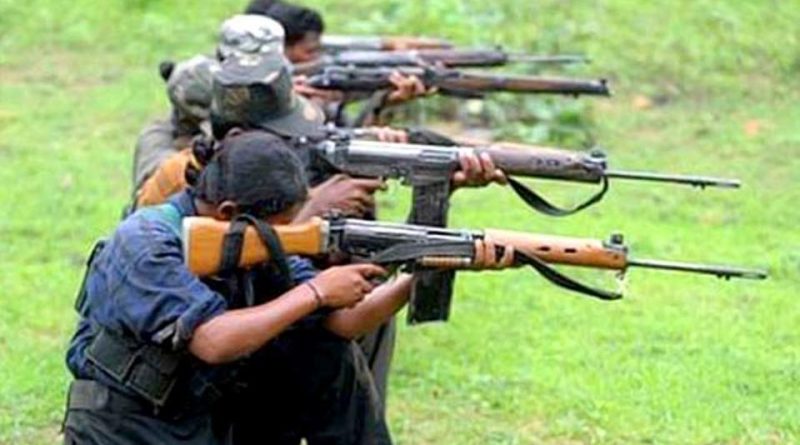CPI Maoist And Government Forces Clash As Jharkhand Assembly Elections Loom On The Horizon
The specter of Maoism lingers over Jharkhand, as it prepares to go to polls over five phases starting November 30,though official data shows that attacks by left wing extremists is on the decline.
The ministry of home affairs, which monitors Maoist affected districts in the country, has listed 19 of the 24 districts in Jharkhand as Maoist affected, including Bokaro, Ranchi, West Singbhum, Palamu, Khunti and Latehar, among others. According to the 2018-19 annual report of the ministry, Chhattisgarh and Jharkhand together accounted for 71.7% of the violent incidents and 81.7% of deaths in 2018; however, in the past five years, there has been an overall reduction in left wing extremist related violence and deaths.According to Jharkhand police data, 145 incidents of violence were reported in 2018 as compared to 496 in 2010.
“The CPI (Maoists) has lost influence to enforce poll boycott like the way they used to do in late ’90s and in the first decade of the 2000s. The locals in most of the Maoist affected areas have voted freely especially during the 2019 parliamentary elections,” a senior police officer who wished to remain anonymous as he was not authorised to speak to media, said.
The main left wing extremist groups operating in the state are the CPI (Maoists), Tritiya-Sammela Prastuti Committee (TPC), the People’s Liberation Front of India (PLFI), and Jharkhand Jan Mukti Parishad (JJMP).
However, incidents of violence, including those that occurred last week, have slowed down campaigning. On November 23 left wing extremists killed four state police personnel in Chandwa in Latehar district. The following day, a local political leader along with a youth were gunned down in Palamu and road construction project was stalled by burning earth movers.
A local Bharatiya Janata Party (BJP) leader, involved in electioneering in Palamu district and who did not wish to be named, said ,“The fear factor has surely reduced but we are more cautious after the attacks, especially while entering the rural pockets.”
Police officials said that though left wing extremists have suffered an erosion in their support base, they are able to inflict damage to security forces, as showcased in last week’s attack. This is why the Election Commission will conduct polls for 81 assembly seats in five phases, the official quoted above said. The first phase will see 13 assembly segments, considered to be a Maoist hotbed, go to polls.
Paro Devi, a woman from Saryu region, once the zonal headquarters of the CPI (Maoists), said, “We are now voting to elect our representatives for past three elections and Maoists have not even punished us as they did previously.”
Political blame game
“The government tall claims have been exposed by attack on policemen in Latehar. It happened on a national highway in the district where the union home minister addressed a rally a day later,” Jharkhand Mukti Morch spokesperson Manoj Pandey said about last week’s attacks.
At an election rally at Simaria last week, Chief Minister Raghubar Das said five ultras (left wing extremists) had surrendered in first 14 years of the state’s existence (Jharkhand was carved from Bihar in 2000). However, in the past five years alone, when the Bharatiya Janata Party (BJP) has been in power, 61 have surrendered, he claimed.
However, a Jharkhand government official, who did not wish to be named as he was not authorised to speak to the media, acknowledged that while there has been a decline in Maoist influence in Jharkhand, it was largely due to former United Progressive Alliance rural development minister Jairam Ramesh’s development plans in Saranda in the Singhbhum region and Saryu in Palamu region, due to which different government schemes were merged to ensure that the poor received social welfare benefits.
The official added that the development work taken up by the BJP government, particularly related to improvements in road and mobile connectivity, has also helped security forces conduct operations against Maoists.
Saryu resident Samod Oraon, said, “We now have access to better roads and are connected with the outside world after pending bridge and road projects were completed. We have also got electricity and mobile connectivity.”
According to Pankaj Kumar Singh, Latehar development officer, 50 additional base camps have been set up in Maoist affected areas. “In past six years, the Central Para Military Forces have entered inside Maoists bastion forcing Maoists to confine themselves in some pockets. They cannot move freely anymore,” a senior Jharkhand police official involved in anti-Maoist operations, said.
Burha Pahar, a hilly terrain spread across 50 km on the Jharkhand-Chhattisgarh border, still allows free movement of left wing extremists in the two bordering states. “We had once dislodged Maoists from there but they came back with the vigour and we lost control of some parts,” the police officer quoted above said.
The special police observer for the Jharkhand assembly elections MK Das, a retired 1977 batch IPS officer, said, “Our focus is on building an atmosphere where the electorate can come out fearlessly to exercise their right to vote.”
To that end, Jharkhand director general of police (DGP), KN Chaubey, said, “The recent Maoists incidents will not affect peaceful elections in the state. Adequate number of security personnel have already been deployed at cluster points and other strategic locations as per the Election Commission of India directives.”
Source : https://www.hindustantimes.com/india-news/shadow-of-maoist-violence-lingers-over-polls/story-WLGiACbncm4cbt3VU9F0XO.html

